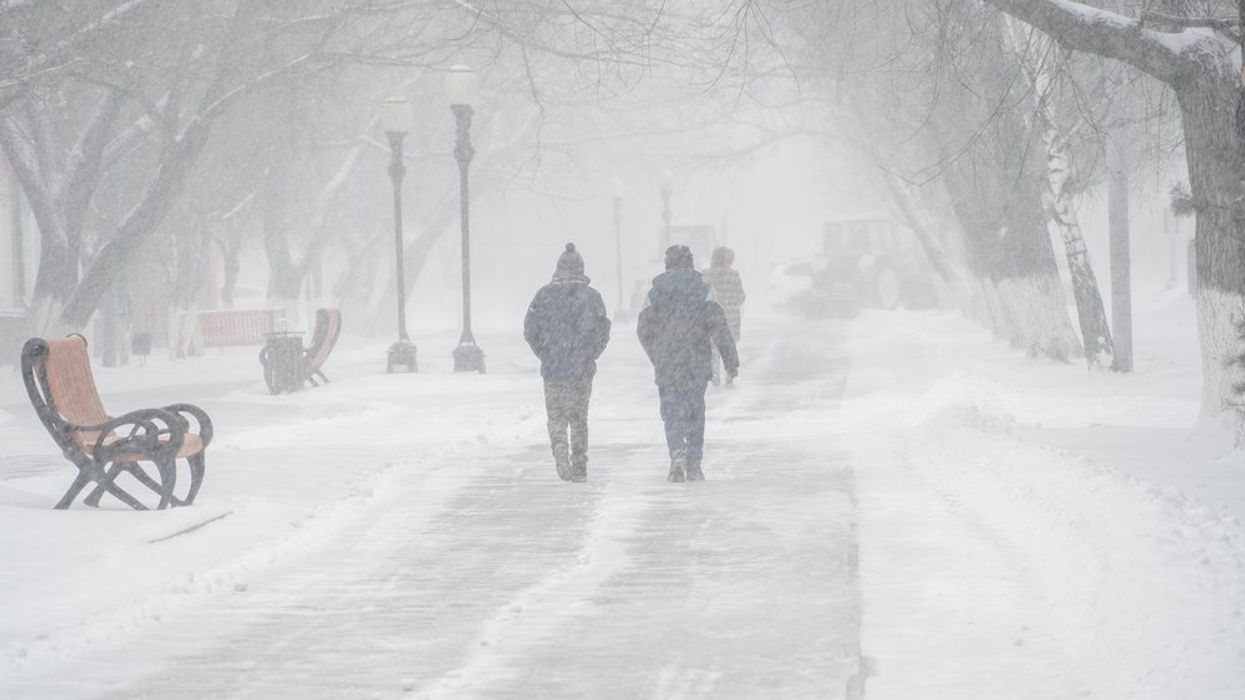(CNN) — Winter storms can derail our daily schedules and travel plans — but extreme cold, freezing rain, wind and snow can also affect our health.
In recent years, death rates in the United States have been 8% to 12% higher during winter months, according to mortality data from the US Centers for Disease Control and Prevention. Overall, more than 19,000 Americans have died specifically from cold-related causes since 1979, according to death certificates.
This increase is linked to “seasonal changes in behavior and the human body” and “increased exposure to respiratory diseases,” according to the US Environmental Protection Agency.
On top of preparing your home and car for winter weather, there are steps you can take to keep yourself and others healthy when it’s very cold.
Caring for children and the elderly
Infants and older adults should be top of mind during a winter storm, says Dr. Tyler Barrett, executive medical director of emergency services at Vanderbilt University Hospital in Nashville.
“Infants and older adults have a harder time maintaining their core body temperatures,” he said, because babies lose body heat more easily and older adults tend to make less body heat. Hypothermia happens when your body begins to lose heat faster than it can be produced.
Make sure any children younger than 1 are sleeping in warm rooms, ideally between 68 and 72 degrees. Similarly, if you have friends or neighbors older than 65, check on them frequently to ensure that their homes are adequately heated.
Barrett also notes the risk for hypothermia goes up once the temperature inside a home goes below 50 degrees for a prolonged period of time.
Try to keep pets indoors during cold weather, but if they go outside, thoroughly wipe their legs and underbelly free of snow when they come in.
Staying safe indoors
Never use generators, gas or charcoal grills or wood stove inside your home. The fumes from these devices can cause carbon monoxide to build up, Barrett adds, and the odorless and colorless gas can kill you.
“If you are running any sort of heater, always be cognizant of carbon monoxide and have a carbon monoxide detector in your house,” he said.
Using the kitchen stove for heat is also not safe, the CDC warns; instead, use extra blankets, sleeping bags or coats. A well-maintained fireplace or a portable space heater may be a safer alternative.
Bolster your winter wardrobe
Avoid traveling on ice-covered roads if possible. If you’re stranded outdoors and have a vehicle, it’s safest to stay inside it to prevent hypothermia, the National Weather Service says.
If you have to shovel snow or do other outdoor work, take your time and work slowly. Avoid walking on ice and getting wet.
Travel in pairs and keep an emergency kit nearby, as well as a cell phone, when you’re participating in outdoor recreation like skiing, sledding, or going for a run.
Dangers of frostbite and hypothermia
If you need to venture out during a winter storm, Barrett recommends limiting the amount of time you spend outside to prevent frostbite or hypothermia.
“Dress in warm, dry layers with a special emphasis on protecting those more sensitive areas like your ears, your nose, your cheeks, your toes, your fingers,” he said. “Those are the areas that are at increased risk of developing frostbite.”
Frostbite can happen in freezing temperatures when your blood vessels narrow, skin temperature drops and ice crystals form around and within your cells, causing damage. Symptoms include white or grayish-yellow skin that feels unusually firm and numbness in the affected area.
If you or someone you know develops frostbite and immediate medical care is not available, the CDC recommends getting into a warm room as soon as possible and immersing the affected area in warm — not hot — water. You can also warm the affected area using body heat.
Hypothermia is a more serious medical condition that requires emergency medical assistance, the CDC says. Someone with hypothermia may be shivering excessively or have skin that is bright red and cold. Other signs include confusion, memory loss, slurred speech and drowsiness.
If you can’t get to a hospital right away, find a warm room or shelter and remove any wet clothing.
Warm the center of the body first – chest, neck and head – with skin-to-skin contact under loose, dry layers. Warm beverages can also help increase body temperature.
Staying moisturized
In extremely cold temperatures, our skin can become very dry and cracked if not moisturized properly.
“You do have increased risk for developing skin infections,” Barrett said. “We all have bacteria that live on our skin, and your skin serves as a barrier, keeping that bacteria from infecting you, so if you do get dry cracked skin, you are at some slightly increased risk.”
Use warm water instead of hot water during baths and showers to prevent dry skin from worsening.
The American Academy of Dermatology recommends applying moisturizer immediately after you shower to trap existing moisture in your skin. An ointment or cream could be more beneficial than lotions with heavy perfumes or scents.
“People who suffer from eczema may get some increased flares during wintertime,” Barrett said, adding that those with winter-related skin conditions should talk to their primary care provider for further guidance and treatment.
Extreme cold and the lungs
Colder, drier air can cause complications for people with respiratory illnesses like the flu, Covid-19 and RSV, Barrett says, by irritating the airways and causing wheezing, coughing and shortness of breath.
Annual vaccinations are important, especially those for flu and Covid-19, to help prevent these complications. The flu shot has been shown to reduce the risk of having to go to the doctor with flu by 40% to 60%, according to the CDC.
People with lung diseases such as asthma are also at risk of complications from cold weather because of inflammation in their lungs.
“If you do have asthma and you’re going to be outside, try to limit breathing in that cold air, whether that’s wearing a scarf or just limiting your time outside,” Barrett said. People with asthma should also keep a rescue inhaler on them at all times.
If you cannot breathe due to extreme cold, whether from a respiratory illness or asthma, he advises going to the emergency room right away.
Cardiovascular risks
Frosty weather can affect your heart, especially if you have cardiovascular disease, by narrowing the blood vessels. That can put stress on your heart.
“Snow shoveling is one example where we see people who have heart disease, or risk factors for heart disease, exerting themselves more than they may otherwise,” Dr. Reed Caldwell, an assistant professor in the Ronald O. Perelman Department of Emergency Medicine at NYU Langone Medical Center and an emergency department physician, told CNN previously.
A drop in temperature by 33 degrees Fahrenheit was associated with a cumulative 2% increased risk of heart attack in a 2010 study published in the BMJ.
People who have a heart condition or even high blood pressure should avoid strenuous activities like shoveling or exercising too much.
The-CNN-Wire
™ & © 2024 Cable News Network, Inc., a Warner Bros. Discovery Company. All rights reserved.
El Niño

Video Source: Advocate Channel


















































